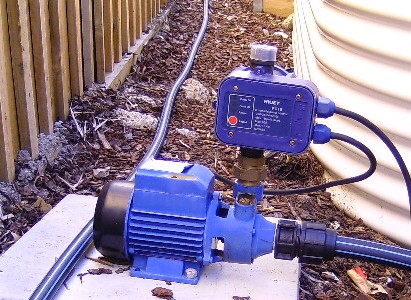Most pump suppliers and design charts will specify a larger pump than you really need (They sell a more expensive pump, It’s less likely that the pump will be returned because it isn’t big enough, and they aren’t paying the power bill)
If you want to pick the most economic pump here is how to go about it.
Instantaneous Flow
What is the most flow you need at any one time. Here are some figures for typical house fittings.
| Fitting | Flow Litres/min |
| Tap | 10 to 15 |
| Tap with Flow Restrictor | 4 to 6 |
| Low Flow Shower | 7 to 9 |
| Washing Machine* | 4 to 10 |
| Dishwasher | 4 to 6 |
| Toilet | 3 to 5 |
| Garden Sprinkler** | 10 to 15 |
*To get to the lower figure you will need to close the supply valve this will add a few minutes to the wash but will help with issues like Water Hammer.
**It’s really better to irrigate the garden with a separate pump.
Add together the highest flow rate fittings that you think you will want to run together, which will give you a Total Flow Rate ‘Q’
Pressure
You need to aim for a pressure at the fitting of around 150kPa (15m of Head)
To get this pressure you need to:
- Measure the height of the furthest fitting above the lowest level in the tank ‘Hs)
- Calculate the Pressure Loss ‘Hf‘ due to Friction in the pipes See table below
| Max Flow Rate Litres/min |
Hf m head per 100m of pipe | |||
| 20 | 25 | 32 | 40 | |
| 12 | 10.9 | 3.7 | 1.2 | 0.4 |
| 24 | 13.4 | 3.9 | 1.3 | |
| 36 | 8.3 | 2.8 | ||
The Required Pump Pressure is then calculated from:
Required Pump Head ‘P‘ m = 15 +Hs + Hf
Or
Required Pump Head ‘P‘ KPa = 150 +(Hs +Hf)) x 10
Ordering
To order a pump you just need to quote the Total Flow and Required Pump Head

Hello mate, very nice and informative article you have shared with all of us. I appreciate your efforts. Thanks